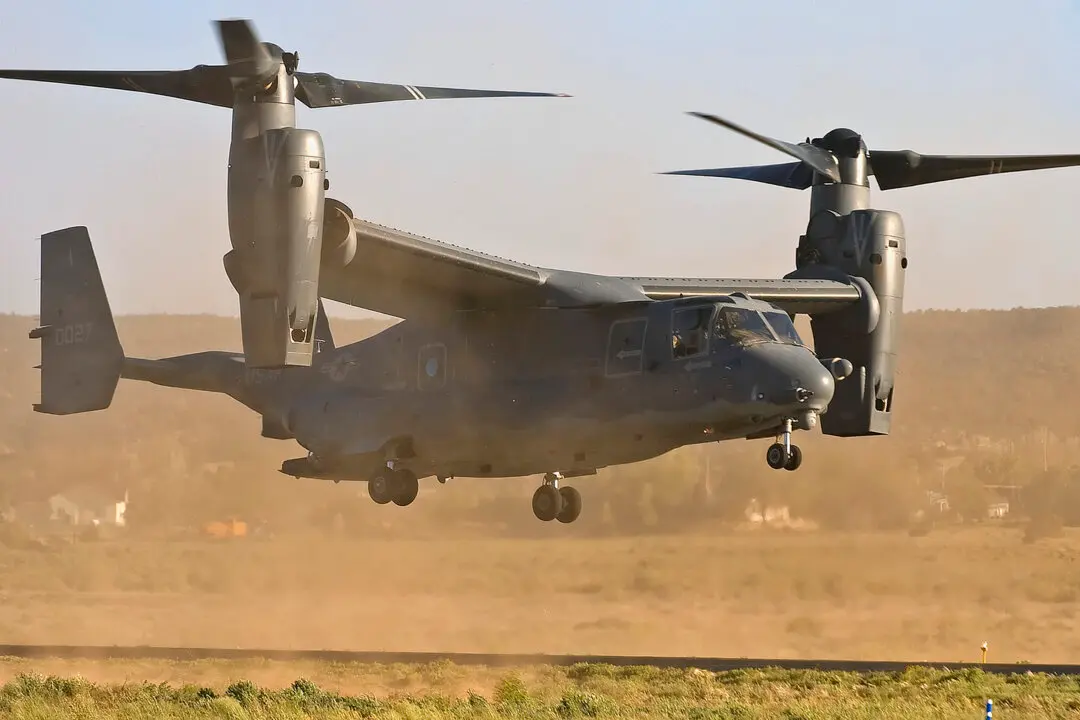The fatal crash of a U.S. Osprey aircraft in Japan last year was caused by a “catastrophic failure” in the gearbox and the pilot’s decision to continue flying despite the malfunction, according to a U.S. Air Force report.
The CV-22B Osprey crashed off the shore of Yakushima, Japan, during a training mission on Nov. 29, 2023, killing all eight airmen onboard. All Osprey aircraft were grounded for months after the incident.





